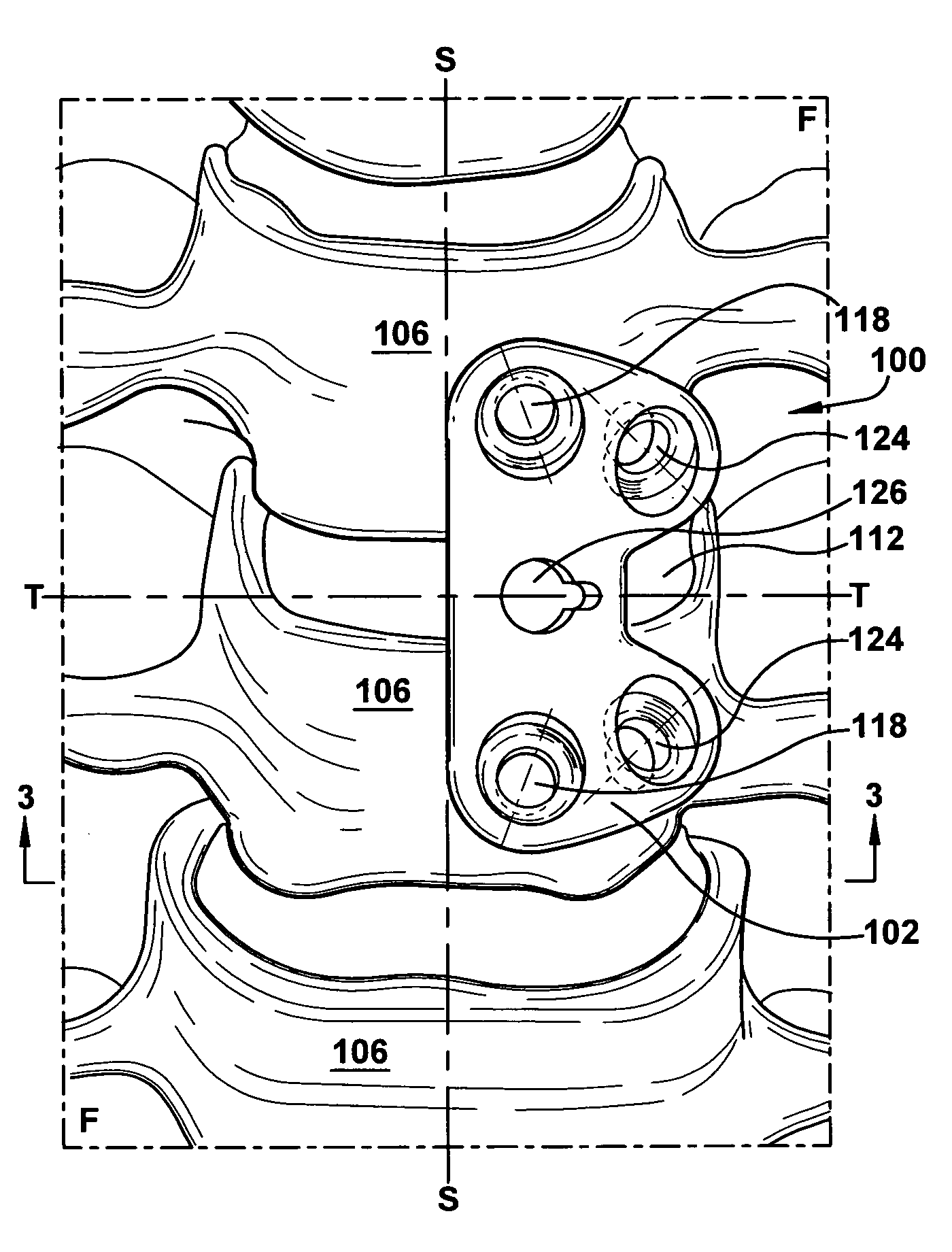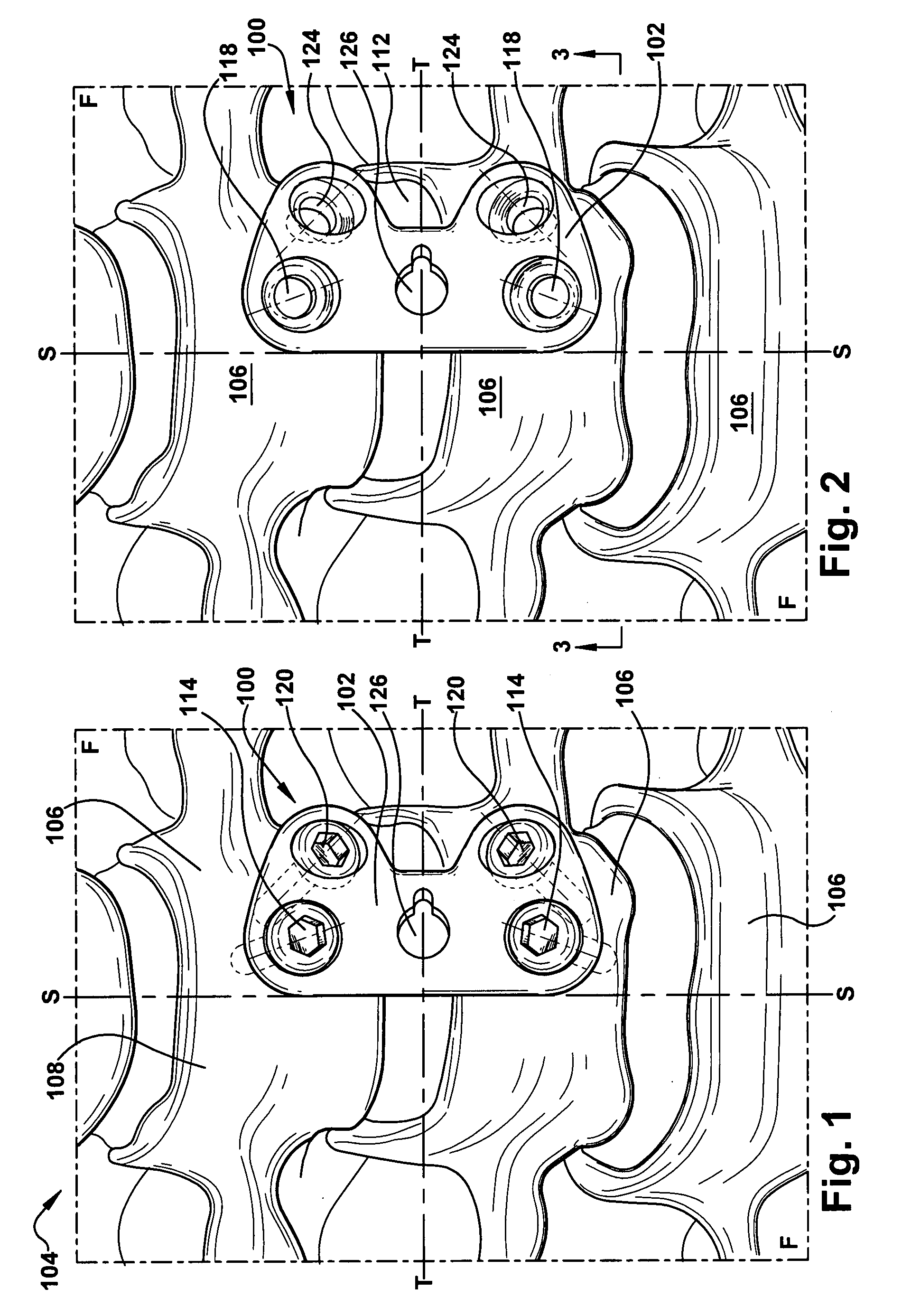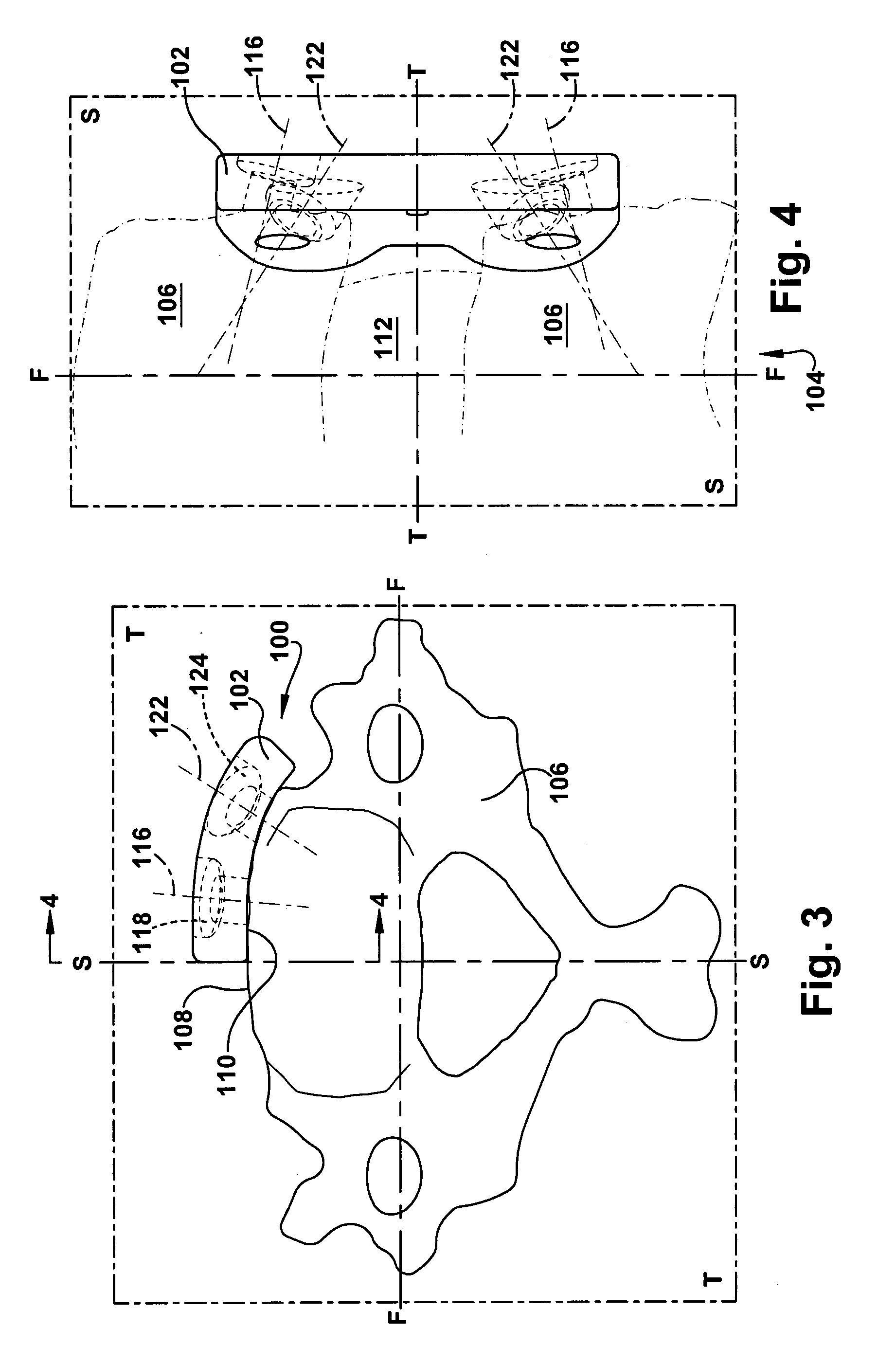Cervical fusion apparatus and method for use
a fusion apparatus and cervical technology, applied in the field of cervical fusion apparatus and method for use, can solve the problems of increased pressure, unfavorable symptoms such as pain, numbness, weakness, disordered reflex symptoms, etc., and achieve the effect of prolonging healing time, reducing pain, and reducing pain
- Summary
- Abstract
- Description
- Claims
- Application Information
AI Technical Summary
Benefits of technology
Problems solved by technology
Method used
Image
Examples
Embodiment Construction
[0016]In accordance with the present invention, FIG. 1 depicts a frontal view of a cervical fusion apparatus 100. The cervical fusion apparatus 100 includes a cervical fusion plate 102, which is shown in FIG. 1 as being attached to a spinal column 104. The spinal column 104 includes a plurality of vertebrae 106, which may be cervical vertebrae.
[0017]In FIGS. 1-4, a known three-dimensional orthogonal coordinate system comprising a frontal plane (“F-F”), a sagittal plane (“S-S”), and a transverse plane (“T-T”) is illustrated in conjunction with the spinal column 104. Each of these three planes is perpendicular to the other two. While the frontal, sagittal, and transverse planes are depicted in the Figures as having certain positions in relation to the spinal column 104 for clarity of description, these planes may be defined in any desired relationship to the spinal column 104 as long as the planes maintain the orthogonal coordinate system as shown. For example, the transverse plane ma...
PUM
 Login to View More
Login to View More Abstract
Description
Claims
Application Information
 Login to View More
Login to View More - R&D
- Intellectual Property
- Life Sciences
- Materials
- Tech Scout
- Unparalleled Data Quality
- Higher Quality Content
- 60% Fewer Hallucinations
Browse by: Latest US Patents, China's latest patents, Technical Efficacy Thesaurus, Application Domain, Technology Topic, Popular Technical Reports.
© 2025 PatSnap. All rights reserved.Legal|Privacy policy|Modern Slavery Act Transparency Statement|Sitemap|About US| Contact US: help@patsnap.com



